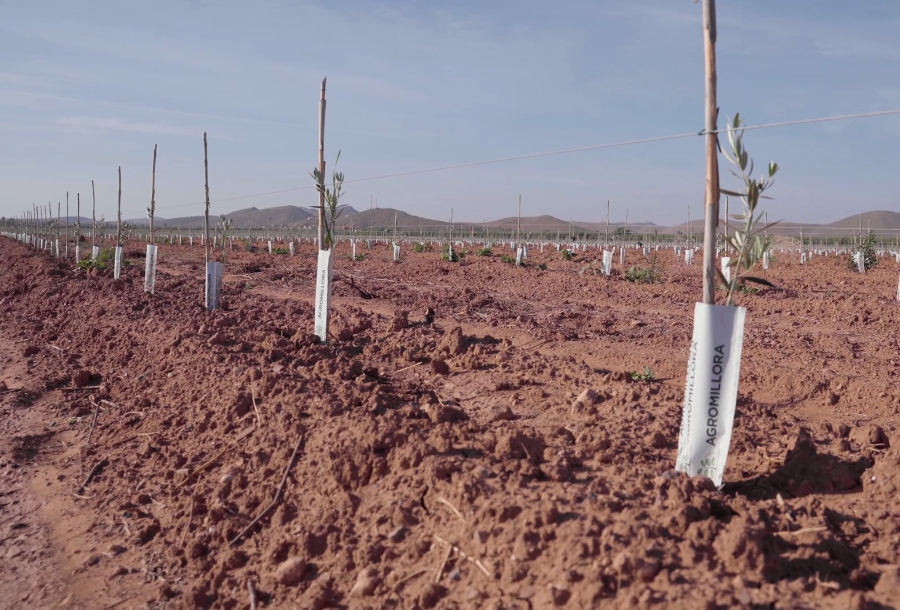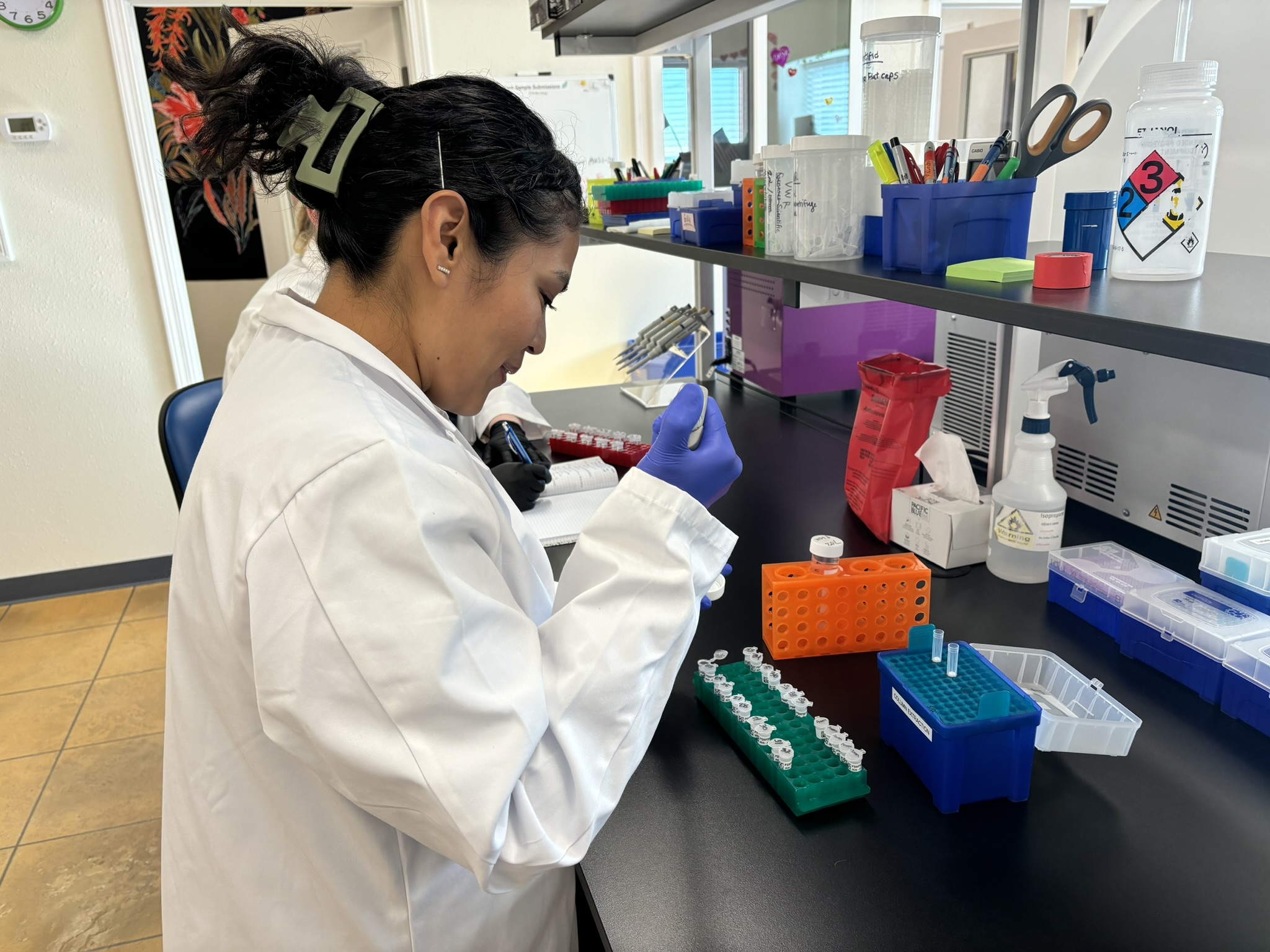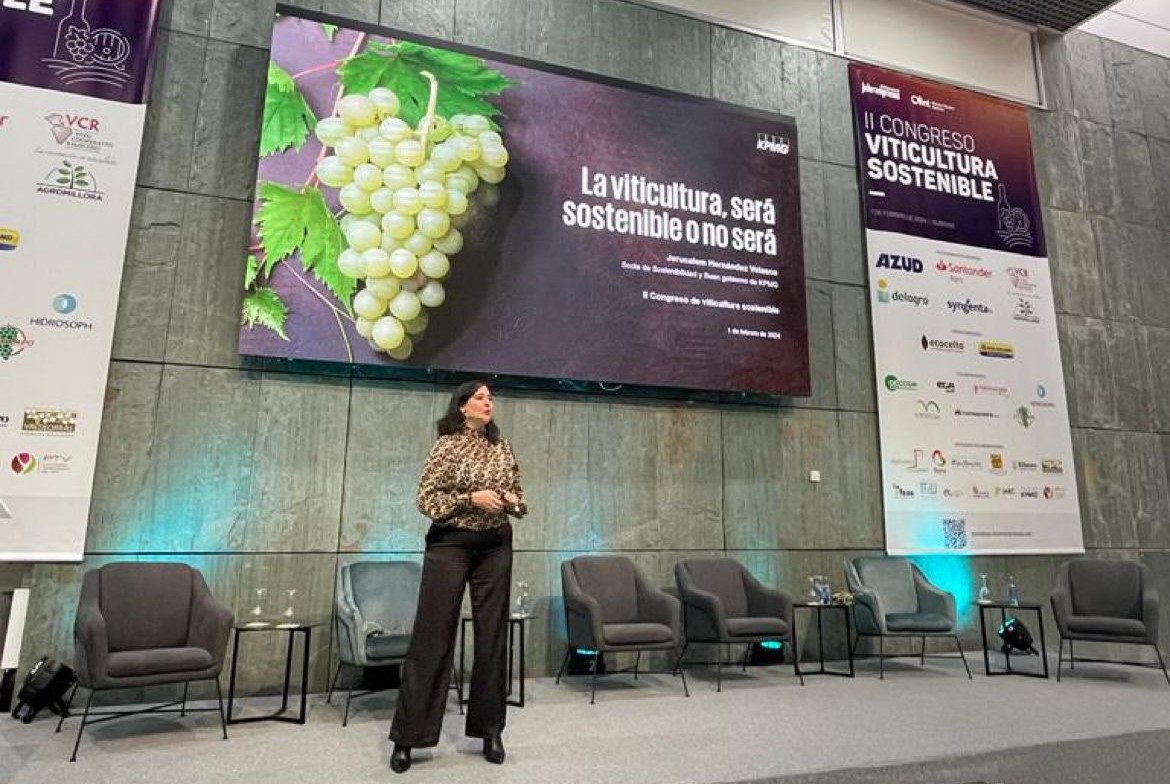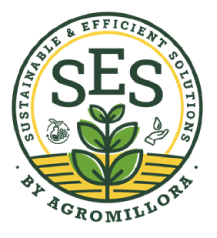Irrigation Strategies to Reduce the Water Footprint in Super High Density Olive Orchards
Modern agriculture faces critical challenges, chief among them the efficient management of water resources.
In super-intensive olive orchards, where planting density is much higher than in traditional systems, the choice of irrigation method is key to delivering water efficiently. Drip irrigation is the most suitable system because it applies water precisely and directly to the root zone, preventing waste and maximizing uptake.
Which emitter flow rate should you choose?
Emitter flow rate directly affects two factors: the efficiency of water application and energy requirements. If pumps are needed to supply the pressure for the irrigation system, selecting lower flow rates reduces the pump’s power demand. This is especially attractive when pumps are powered by solar energy: you can decrease flow rates and run irrigation for more hours each day. A slower application also benefits the soil agronomically by keeping it less saturated, better aerated, and higher in oxygen—conditions that favor healthy root activity.
Emitter spacing on the drip line depends on several factors, including soil type and planting density. In super-intensive olive orchards, where trees are closer together, shorter spacing helps ensure uniform water coverage across the entire field. Uniform distribution prevents imbalanced olive growth and maximizes yield.
For a super-intensive olive grove planted at 3.5 × 1.5 m (about 11.5 × 5 ft), the recommended setup is one drip line per tree row, with emitters delivering 1–1.6 L/h (0.26–0.42 gal/h) spaced 50–75 cm (20–30 in) apart, depending on the soil type and the maximum daily irrigation window during peak demand.
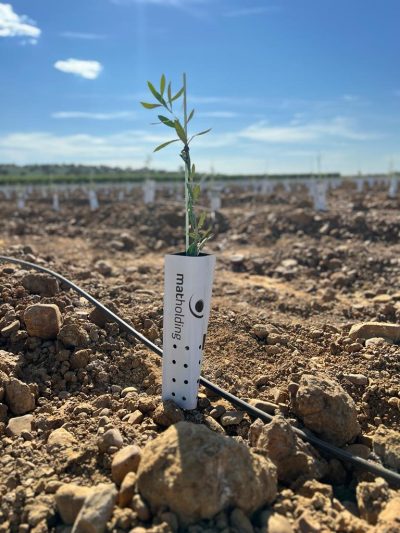
Technologies to Reduce the Water Footprint
Super-intensive olives are already highly mechanized, and that extends to irrigation. Smart irrigation systems—combining soil-moisture sensors and automated controllers—enable more precise, efficient water management. They tailor water delivery to the orchard’s specific needs, conserving resources.
A recommended digital solution for cutting the water footprint in super-intensive olive orchards includes:
- Weather station – Because local climate conditions strongly influence irrigation scheduling, installing an on-site weather station is essential.
- Soil-moisture probes – At each monitoring point, use a 60-cm (24-in) encapsulated multi-depth probe with FDR sensors every 10 cm (4 in). These measure moisture, temperature, and electrical conductivity (EC) at each depth, allowing you to track soil salinity trends for decisions on leaching salts and fertigation.
- Water EC sensor – Critical for monitoring irrigation-water quality.
- Volumetric or flow meter – With remote-reading capability for precise control of applied water.
- Irrigation controller – Collects sensor data and automates irrigation based on real-time conditions.
- Digital information platform – A dashboard that aggregates and displays all collected data for easy interpretation.
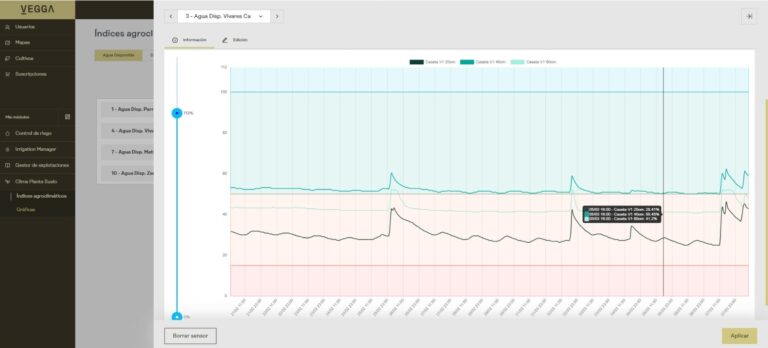
Decision support
Facilitating farm management
Increasing crop profitability
Automatic, online parameter control
The ability to adjust irrigation parameters automatically in response to soil-moisture data delivers more efficient and sustainable management. Online access to these data also facilitates collaboration among growers, technicians, and managers, encouraging a collective, smart-water approach in agriculture.
In a world of limited water resources, soil-moisture monitoring stands out as an essential tool for the agriculture of the future.
By improving decision-making, simplifying farm management, and boosting crop profitability, these technologies benefit individual farmers and enhance the sustainability and efficiency of the agricultural sector as a whole. Investing in monitoring systems is not only a responsible move; it is also a crucial step toward a more sustainable and profitable future for agriculture.



